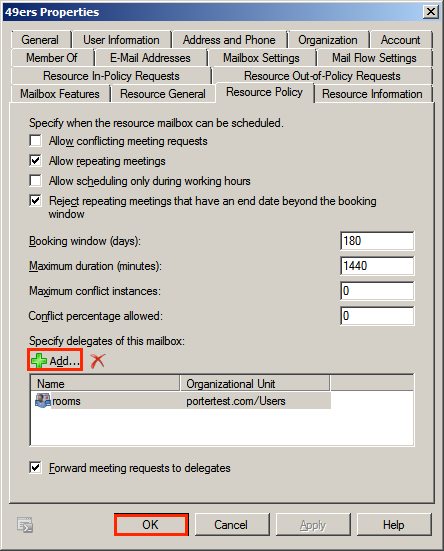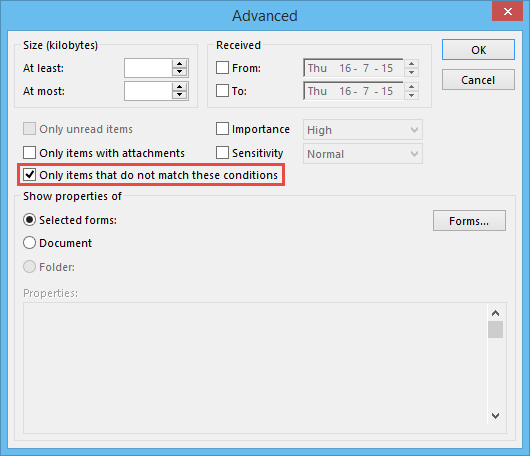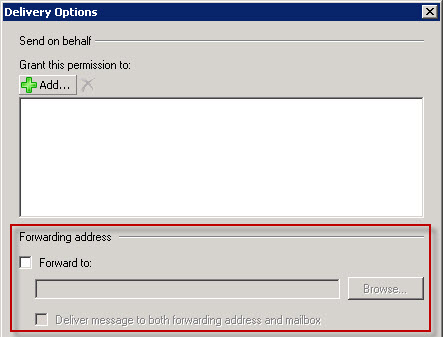

If you are less familiar with manipulating RBAC, I would point you to this blog post which does a deeper dive into RBAC in general. You may want to note that RBAC is cumulative, so if an administrator has an admin role that includes New-Inbox rule with the forwarding parameters, removing it with the steps above will not make it disappear. RBAC is the method to remove the forwarding options from user’s view in Outlook on the web. In addition, you can easily identify the users hitting this rule as well through PowerShell reporting or by the generating an incident report action. You can also easily add exceptions here via the “add exception” button if certain senders or recipient domains should be allowed to forward. In PowerShell that would be the parameter ‘-MessageTypeMatches AutoForward’ In the image, I have chosen to apply the rule to messages forwarded to all recipients outside the organization and I am rejecting the message with an explanation so the user is informed of the policy. You can add multiple conditions, but the key is to include “the message type is… Auto-forward”. If you are not seeing all options, ensure you select “More options” towards the bottom of the screen.
#Forward emails exchange 2010 plus
To set up a transport rule in Exchange Online Admin Center, navigate to Mail Flow > Rules and select the plus sign to create a new rule. However, as an admin, you would see the drop in a message trace as a failed message with the following Drop reason: “” Say you have a partner company, and your users may have legitimate reasoning to forward their mail to the partner you can configure an additional remote domain for the partner domain with different settings. The downside to this method is that the user is not notified that their forwarded message is dropped. Uncheck the “allow automatic forwarding” box and repeat for any additional remote domains you may have set up that you want to drop auto forwarded messages to. You can set up the remote domain option through the Exchange Online Admin Center > Mail Flow > Remote Domains and select the default remote domain. Use If: You are a company that primarily uses OWA and have already ensured users do not have forwarding set to begin with.It only removes the option to set it up from view it does not remove any rules already in place and for that matter, it continues to allow those rules to function (though admittedly you could always run a script to null out the parameter). Cons: Does not remove the options in Outlook and does nothing for forwarding that was already set up.Pros: In OWA, users simply do not see the option to set forwarding up.Use If: You want to be able to notify the user their message was blocked, or if you have complex exceptions you need to allow for.Cons: Does not block the OWA “Start/Stop Forwarding” method.Pros: Allows you more granularity on conditions and actions, reporting is available.Use If: You have few exceptions to consider and just want an easy blanket option.Cons: The user is not notified their forwarded message is dropped.Pros: Applies to all the above-mentioned types of forwarding a user can set up.The main ways I have identified are listed below, along with a brief description of their pros and cons. This is set as a “ForwardingSMTPAddress” parameter on the mailbox.Īs an admin, you have a few different ways to prevent forwarding of emails outside of your environment. Users can select to Stop or Start forwarding and enter the address to forward to. In OWA this is accessed through Options > Mail > Forwarding.Set forwarding on their mailbox using OWA options. In OWA this is accessed through Options > Mail > Inbox and sweep rulesĢ.In Outlook this is accessed through File > Manage Rules and Alerts.The types of forwarding via this method are: forward, forward as an attachment and redirect. Create an inbox rule to forward using Outlook or Outlook on the web (also sometimes called by OWA, it’s old name).

A user can set up forwarding in a few different ways:ġ. In support, I get this question quite frequently: “How do I block users from auto forwarding their mail outside my environment?” There are plenty of good reasons you may not want auto forwarding: you may have HIPAA laws to follow, regulatory compliance or data privacy concerns or simply because it makes you uncomfortable.

Please go here to read it: All you need to know about automatic email forwarding in Exchange Online
#Forward emails exchange 2010 update
Update : We have updated and expanded the information contained here in a new blog post.


 0 kommentar(er)
0 kommentar(er)
